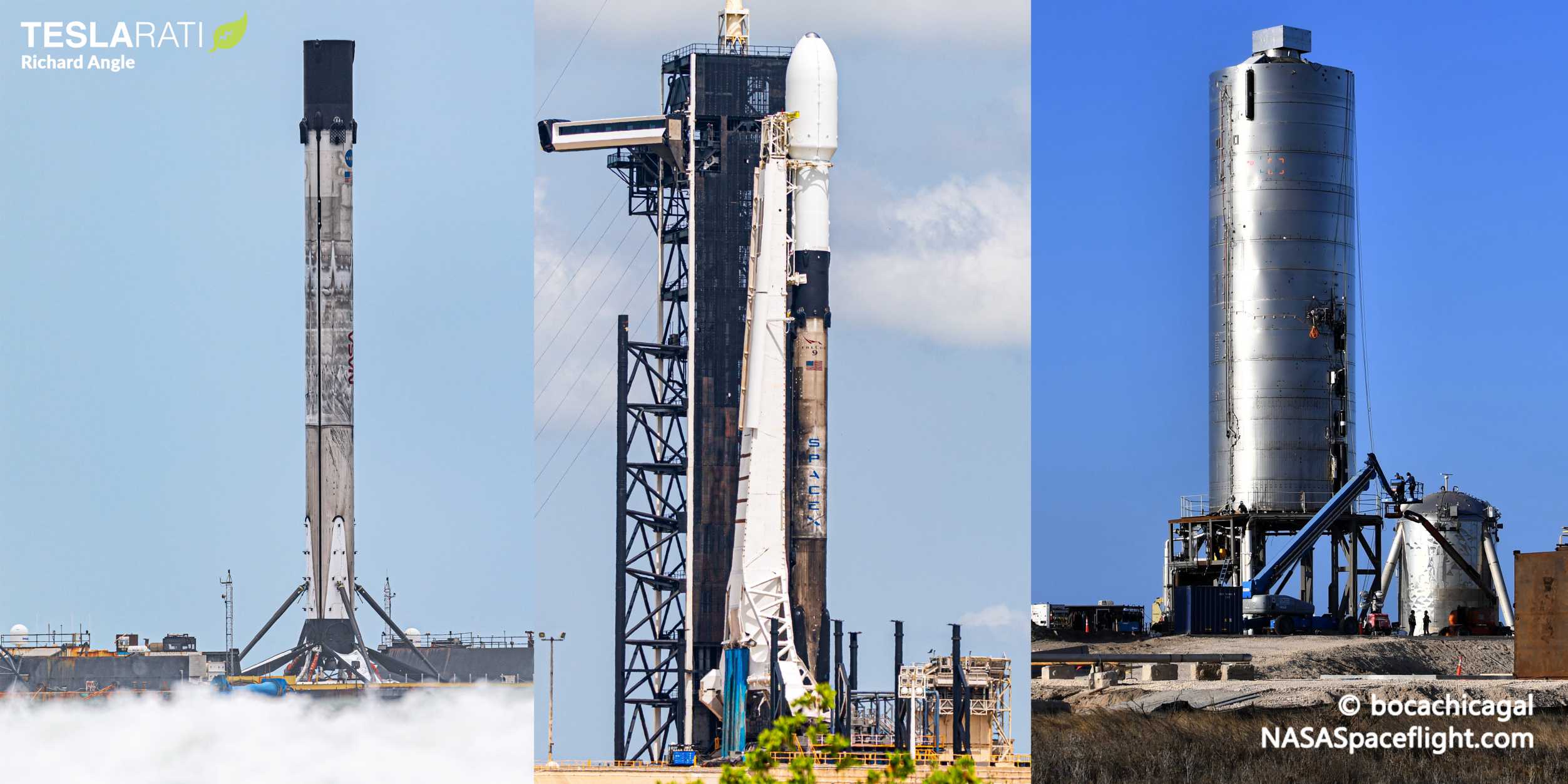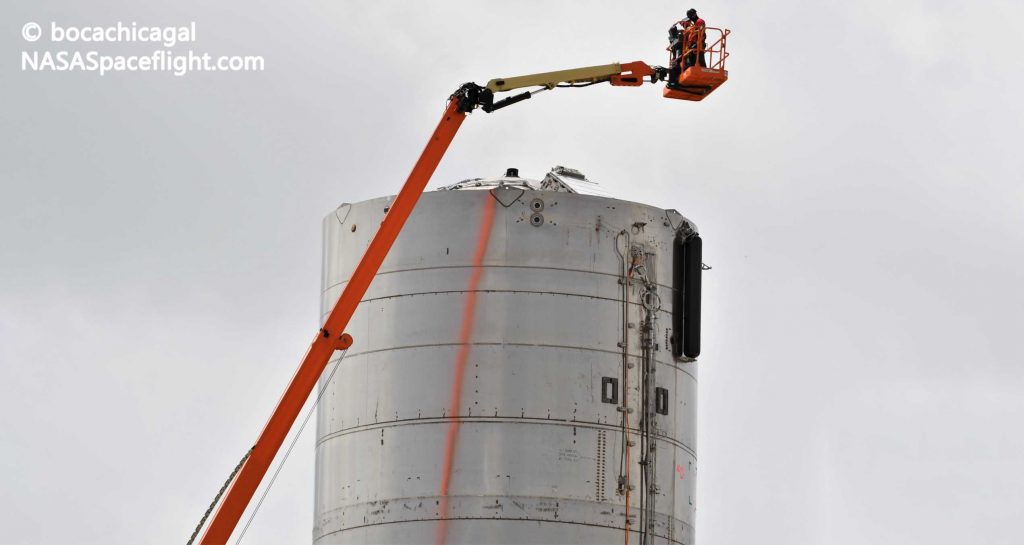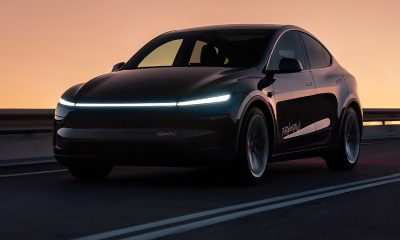

News
SpaceX hit by back to back Falcon 9 and Starship rocket delays
SpaceX has been hit by multiple back-to-back Falcon 9 launch and Starship test delays in a period of a few days, ending the company’s second attempt at a potentially record-breaking month.
Originally scheduled to launch no earlier than (NET) June 22nd, give or take, SpaceX’s own Starlink-9 satellite mission kicked off the misfortune and has suffered the most. After SpaceX announced an indefinite delay on July 11th to allow for “more time for checkouts”, Starlink-9 is not expected to launch for several more days at best. On July 13th, SpaceX announced that another summer mission targeting a NET July 14th launch had also been delayed indefinitely to allow teams to inspect the Falcon 9 rocket’s upper stage and potentially replace hardware.
Those two delays have had follow-on effects on subsequent launches planned in late July and early August but the actual end-results will be hard to determine until SpaceX has settled on alternate launch dates for Starlink-9 and ANASIS II. Meanwhile, all throughout those orbital-class launch delays, the first Raptor engine test with SpaceX’s fifth full-scale Starship has been consistently delayed and is now expected no earlier than this week (roughly July 15-19). The swath of delays have been so pronounced and oddly simultaneous that CEO Elon Musk even weighed in on Twitter yesterday, shedding a bit of light on the situation.

On July 13th, in response to a Spaceflight Now article detailing a few of those setbacks, Musk revealed that SpaceX is “being extra paranoid” – presumably the cause of most of the recent delays. Per Musk, “maximizing [the] probability of [a] successful launch is paramount” to SpaceX – not exactly a shocking revelation but still good to hear. Over the last six or so weeks, SpaceX has attempted to substantially ramp its launch cadence, targeting an unprecedented four launches in June 2020.
Delays reared their head, however, beginning with Starlink-9 around the last week of the month. SpaceX simply carried its four-launch-month ambitions into July, although that goal has already been pushed out of reach before the first launch of the month. As of July 1st, SpaceX has completed 11 launches in 2020 and has at least another 16 within tentative launch targets in the second half of the year. To complete all 16, the company would have to average almost three launches per month for the rest of 2020, a cadence it’s only managed to sustain for two or so months at a time.
Before ANASIS II’s indefinite delay was announced, Falcon 9 booster B1058 was on track to smash the world record for the fastest turnaround of an orbital class rocket, beating NASA’s Space Shuttle by ~20% (9 days). Somewhat ironically, some concerns surrounding the unflown upper stage have triggered said delay, while the record-breaking B1058 booster was apparently ready for launch. Like Starlink-9, ANASIS II’s delay is indefinite, meaning that it could last just a few days or stretch weeks into the future. If SpaceX manages to turn around for a second launch attempt before July 26th, though, B1058 still has a shot at becoming the world’s most rapidly reusable orbital-class rocket.
Meanwhile, Starship SN5 has been slowly wading through delay after delay as SpaceX’s South Texas team prepares the rocket for its first wet dress rehearsals (WDRs) with live propellant and its first Raptor engine ignition tests (i.e. static fires). As few as a few days after that test is complete, SpaceX wants to launch the massive steel rocket on the first full-scale hop test, potentially reaching 150m (500 ft) or higher before attempting to land nearby.
Prior to numerous delays, Starship SN5’s first static fire was expected to occur as early as late June or early July. As of now, SpaceX appears to be targeting the first wet dress rehearsal (WDR) with live methane and oxygen propellant (a precursor to any flight test) no earlier than (NET) July 15th to test SN5’s “fuel pump.” If successful, SpaceX would presumably move into static fire operations within a few days, followed another few days later by the first hop test attempt if the static fire was also successful.
Check out Teslarati’s Marketplace! We offer Tesla accessories, including for the Tesla Cybertruck and Tesla Model 3.
News
Tesla UK sales see 14% year-over-year rebound in June: SMMT data
The SMMT stated that Tesla sales grew 14% year-over-year to 7,719 units in June 2025.

Tesla’s sales in the United Kingdom rose in June, climbing 14% year-over-year to 7,719 units, as per data from the Society of Motor Manufacturers and Traders (SMMT). The spike in the company’s sales coincided with the first deliveries of the updated Model Y last month.
Model Y deliveries support Tesla’s UK recovery
Tesla’s June performance marked one of its strongest months in the UK so far this year, with new Model Y deliveries contributing significantly to the company’s momentum.
While the SMMT listed Tesla with 7,719 deliveries in June, independent data from New AutoMotive suggested that the electric vehicle maker registered 7,891 units during the month instead. However, year-to-date figures for Tesla remain 2% down compared to 2024, as per a report from Reuters.
While Tesla made a strong showing in June, rivals are also growing. Chinese automaker BYD saw UK sales rise nearly fourfold to 2,498 units, while Ford posted the highest EV growth among major automakers, with a more than fourfold increase in the first half of 2025.
Overall, the UK’s battery electric vehicle (BEV) demand surged 39% to to 47,354 units last month, helping push total new car sales in the UK to 191,316 units, up 6.7% from the same period in 2024.
EV adoption accelerates, but concerns linger
June marked the best month for UK car sales since 2019, though the SMMT cautioned that growth in the electric vehicle sector remains heavily dependent on discounting and support programs. Still, one in four new vehicle buyers in June chose a battery electric vehicle.
SMMT Chief Executive Mike Hawes noted that despite strong BEV demand, sales levels are still below regulatory targets. “Further growth in sales, and the sector will rely on increased and improved charging facilities to boost mainstream electric vehicle adoption,” Hawes stated.
Also taking effect this week was a new US-UK trade deal, which lowers tariffs on UK car exports to the United States from 27.5% to 10%. The agreement could benefit UK-based EV producers aiming to expand across the country.
News
Tesla Model 3 ranks as the safest new car in Europe for 2025, per Euro NCAP tests
Despite being on the market longer than many of its rivals, the Tesla Model 3 continues to set the bar for vehicle safety.

The Tesla Model 3 has been named the safest new car on sale in 2025, according to the latest results from the Euro NCAP. Among 20 newly tested vehicles, the Model 3 emerged at the top of the list, scoring an impressive 359 out of 400 possible points across all major safety categories.
Tesla Model 3’s safety systems
Despite being on the market longer than many of its rivals, the Tesla Model 3 continues to set the bar for vehicle safety. Under Euro NCAP’s stricter 2025 testing protocols, the electric sedan earned 90% for adult occupant protection, 93% for child occupant protection, 89% for pedestrian protection, and 87% for its Safety Assist systems.
The updated Model 3 received particular praise for its advanced driver assistance features, including Tesla’s autonomous emergency braking (AEB) system, which performed well across various test scenarios. Its Intelligent Speed Assistance and child presence detection system were cited as noteworthy features as well, as per a WhatCar report.
Other notable safety features include the Model 3’s pedestrian-friendly pop-up hood and robust crash protection for both front and side collisions. Euro NCAP also highlighted the Model 3’s ability to detect vulnerable road users during complex maneuvers, such as turning across oncoming traffic.
Euro NCAP’s Autopilot caution
While the Model 3’s safety scores were impressive across the board, Euro NCAP did raise concerns about driver expectations of Tesla’s Autopilot system. The organization warned that some owners may overestimate the system’s capabilities, potentially leading to misuse or inattention behind the wheel. Even so, the Model 3 remained the highest-scoring vehicle tested under Euro NCAP’s updated criteria this year.
The Euro NCAP’s concerns are also quite interesting because Tesla’s Full Self-Driving (FSD) Supervised, which is arguably the company’s most robust safety suite, is not allowed for public rollout in Europe yet. FSD Supervised would allow the Model 3 to navigate inner city streets with only minimal human supervision.
Other top scorers included the Volkswagen ID.7, Polestar 3, and Geely EX5, but none matched the Model 3’s total score or consistency across categories. A total of 14 out of 20 newly tested cars earned five stars, while several models, including the Kia EV3, MG ZS, and Renault 5, fell short of the top rating.
Elon Musk
Why Tesla’s Q3 could be one of its biggest quarters in history
Tesla could stand to benefit from the removal of the $7,500 EV tax credit at the end of Q3.

Tesla has gotten off to a slow start in 2025, as the first half of the year has not been one to remember from a delivery perspective.
However, Q3 could end up being one of the best the company has had in history, with the United States potentially being a major contributor to what might reverse a slow start to the year.
Earlier today, the United States’ House of Representatives officially passed President Trump’s “Big Beautiful Bill,” after it made its way through the Senate earlier this week. The bill will head to President Trump, as he looks to sign it before his July 4 deadline.
The Bill will effectively bring closure to the $7,500 EV tax credit, which will end on September 30, 2025. This means, over the next three months in the United States, those who are looking to buy an EV will have their last chance to take advantage of the credit. EVs will then be, for most people, $7,500 more expensive, in essence.
The tax credit is available to any single filer who makes under $150,000 per year, $225,000 a year to a head of household, and $300,000 to couples filing jointly.
Ending the tax credit was expected with the Trump administration, as his policies have leaned significantly toward reliance on fossil fuels, ending what he calls an “EV mandate.” He has used this phrase several times in disagreements with Tesla CEO Elon Musk.
Nevertheless, those who have been on the fence about buying a Tesla, or any EV, for that matter, will have some decisions to make in the next three months. While all companies will stand to benefit from this time crunch, Tesla could be the true winner because of its sheer volume.
If things are done correctly, meaning if Tesla can also offer incentives like 0% APR, special pricing on leasing or financing, or other advantages (like free Red, White, and Blue for a short period of time in celebration of Independence Day), it could see some real volume in sales this quarter.
You can now buy a Tesla in Red, White, and Blue for free until July 14 https://t.co/iAwhaRFOH0
— TESLARATI (@Teslarati) July 3, 2025
Tesla is just a shade under 721,000 deliveries for the year, so it’s on pace for roughly 1.4 million for 2025. This would be a decrease from the 1.8 million cars it delivered in each of the last two years. Traditionally, the second half of the year has produced Tesla’s strongest quarters. Its top three quarters in terms of deliveries are Q4 2024 with 495,570 vehicles, Q4 2023 with 484,507 vehicles, and Q3 2024 with 462,890 vehicles.
-

 Elon Musk5 days ago
Elon Musk5 days agoTesla investors will be shocked by Jim Cramer’s latest assessment
-

 News1 week ago
News1 week agoTesla Robotaxi’s biggest challenge seems to be this one thing
-

 Elon Musk2 weeks ago
Elon Musk2 weeks agoFirst Look at Tesla’s Robotaxi App: features, design, and more
-

 News2 weeks ago
News2 weeks agoWatch Tesla’s first driverless public Robotaxi rides in Texas
-

 News2 weeks ago
News2 weeks agoWatch the first true Tesla Robotaxi intervention by safety monitor
-

 Elon Musk2 weeks ago
Elon Musk2 weeks agoTesla to launch in India in July with vehicles already arriving: report
-

 Elon Musk2 weeks ago
Elon Musk2 weeks agoTesla officially launches Robotaxi service with no driver
-

 Elon Musk1 week ago
Elon Musk1 week agoA Tesla just delivered itself to a customer autonomously, Elon Musk confirms




















